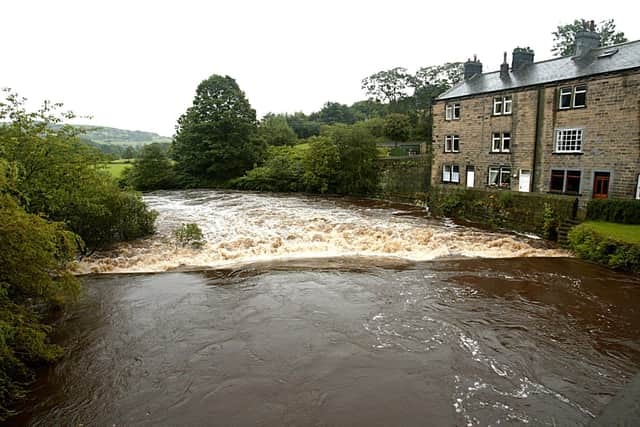River pollution: River Calder which runs through Halifax, Sowerby Bridge, Hebden Bridge and Todmorden 'one of England's worst' for sewage spills
and live on Freeview channel 276
Data from the Environment Agency has been released which shows sewage spills recorded by Event Duration Monitors (EDM) in 2023 – which record the frequency and duration of storm overflow spills.
Storm overflows are safety valves built into the combined sewer system. Excess sewage and rainwater can be discharged into rivers when the sewer system is under strain to protect sewage backing up into homes and streets.
Advertisement
Hide AdAdvertisement
Hide AdAnalysis by the Guardian tracked English rivers with the most sewage spills per mile in 2023, ranking the River Calder at fourth worst with 72 spills per mile of river - a total of 5,647 sewage spills.


The data from the Environment Agency for Halifax shows that spills into the River Calder and Hebble Brook were recorded 337 times for 3347.96 hours when combining data from three different points under the site name Halifax Copley Sewage Treatment Works.
Near Sowerby Bridge, combining the recorded data at six points – the High Royd Sewage Treatment Works, Sowerby New Road Combined Sewer Overflow (CSO), Town Hall Street CSO, Back Wharf Street CSO, Wharfe house CSO, and Sowerby Bridge sewage pumping station –there were 482 spills for 3271.34 hours.
In Hebden Bridge, there were 46 spills for 254 hours recorded for Fielding Street and at the Princess Bridge No.2 site there were 138 spills for 1858.17 hours into the River Calder.
Advertisement
Hide AdAdvertisement
Hide AdAshenhurst Road’s EDM in Todmorden recorded spills into the River Calder 65 times for 85.25 hours and the Hazelwood Street CSO recorded spills 69 times for 156.25 hours.
Spill monitors were installed at every storm overflow in England in 2023.
The Government’s Storm Overflows Discharge Reduction Plan states that, in England, there are approximately 15,000 storm overflows.
In 2021, 90 per cent of them discharged at least once, and five per cent discharged more than 100 times. The reduction plan states these discharges pose a risk of harm to both public health and the environment.
Advertisement
Hide AdAdvertisement
Hide AdIn January 2022, a report by the parliamentary environmental audit committee said only 14 per cent of rivers in England met good ecological status.
The Environmental Agency data used is for storm overflows only and does not include emergency overflow data.
Yorkshire Water said it was disappointed about the number of discharges.
"The weather experienced in the region in 2023 included a very wet summer and prolonged heavy rainfall towards the end of the year resulting in groundwater infiltration into the sewer network.
Advertisement
Hide AdAdvertisement
Hide Ad“Met Office statistics show 1178mm of rainfall in our area in 2023, the highest level since 2013 and with the second half of the year one of the wettest on record.
“Our teams worked hard throughout 2023 to reduce discharges as part of our commitment to improve the operation of our network. As a result, our modelling indicates investment in our network and changes to our operations since 2021 equate to an improvement of 12,980 discharges when normalised against rainfall.
“Nevertheless, we know there is more to do, and we are making headway with a £180m programme to reduce discharges across the region by April 2025.”
Comment Guidelines
National World encourages reader discussion on our stories. User feedback, insights and back-and-forth exchanges add a rich layer of context to reporting. Please review our Community Guidelines before commenting.